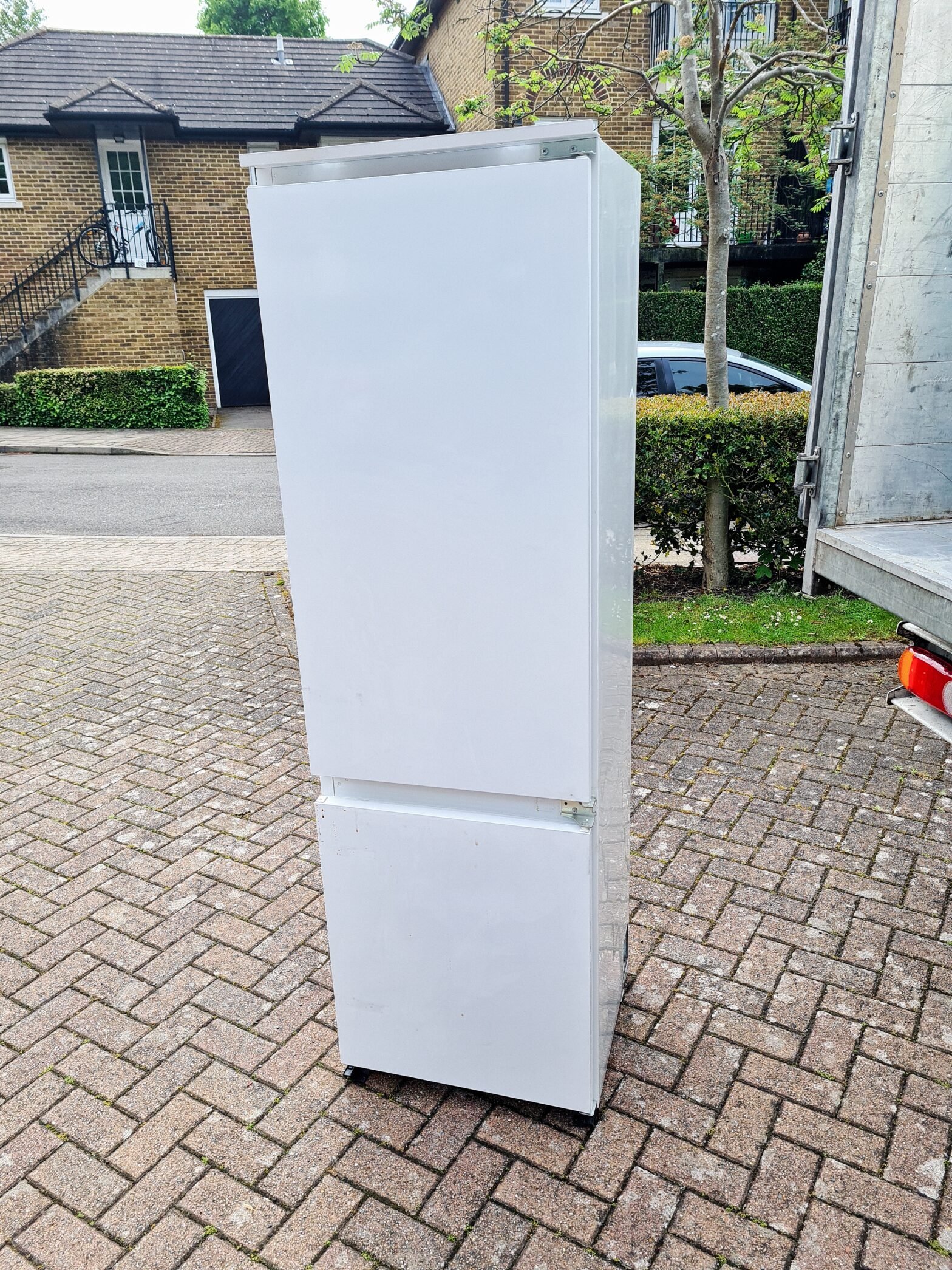Fridge removal does not necessarily mean fridge waste. New specialist factories are opening across the country with the facilities to truly recycle fridges.
Why are old fridges difficult to recycle?
The first reason is low yield. Companies that recycle want to extract materials that they can sell. Fridges are heavy and made of lots of different materials, and until recently, the only thing that could be salvaged was low-quality plastic. This plastic can only be used for plastic plant pots and seedling trays. It is not food grade and so has limited use and value. This is the same reason a scrap metal merchant won’t want anything to do with your old fridge.
The second reason is legal. Fridge insulation and cooling contains harmful gasses and chemicals. Since 2002 the law has protected the environment from irresponsible companies who would carelessly release them to the atmosphere. These chemicals can cause harm to the ozone layer and pollute the local environment. Thankfully there is a way to safely isolate these chemicals, but it is costly and requires liquid nitrogen.
The average fridge freezer weighs 130kg
When I called professionals to remove my fridge, I was amazed at the space left behind in the kitchen. Not only are fridges heavy, but they are large. This is the third reason why recycling them has been difficult. Developing machines that can efficiently break fridges of all sizes down is a challenge. Having enough storage space for thousands of old fridges is rare.
The final difficulty for fridge recycling is how complicated they are. Part metal, part plastic. They contain gasses, glass, and circuitry. Wires and pipes need to be separated, stripped, and untangled. This also makes them hard to repair at home. Although ‘right-to-repair’ culture is strong with cars, especially in the US, the same attitude does not exist for consumer electronics in the UK. This contributes to a throwaway culture of fridges.
Over one million fridges are illegally dumped each year
Whilst you might expect there to be a yearly peak of thrown away fridges in the summer, recent years have shown a second peak, in November. Tempted by Black Friday and Cyber Monday deals, consumers can be pressured into making unnecessary purchases, and creating unnecessary waste.
Thankfully, these will soon be issues of the past. Investment into modern recycling facilities has massively improved their capabilities. Implementing techniques used across manufacturing, these futuristic recycling plants have a massively improved yield. Giant conveyor belts feed the fridges into a machine that shreds it into thousands of small pieces. These pieces pass through special water tanks with sensors that detect and separate the heavier metals. These metals can then be sorted and melted down and reused.
68% of fridges are recycled
Perhaps the most exciting development in fridge recycling is that the plastic itself can now be recycled into new fridges. By adapting a device used in peanut factories, modern recycling plants use a special scanner to detect the colour of the plastic shreds. Anything that is not pure white plastic is separated and turned into seedling trays. What remains can then be purified to a food-grade standard. This means it can be used again for new fridges, reducing waste and the materials used in fridge manufacture.
The home front
So what can we do at home to help? Firstly we can reduce the amount of fridge and white good waste we create. Often the ‘deals’ advertised on Black Friday and Cyber Monday aren’t as good as they seem. If we can avoid being tempted into making purchases we don’t need, we can avoid throwing away a perfectly good fridge and creating unnecessary waste.
When you decide to remove your own fridge, it is a one-way-trip to the dump. To avoid this, use reputable waste management companies. Be careful to avoid rogue traders who fly tip, damaging the local environment and causing expensive damage to roads or properties.
To see our prices for fridge removal, click HERE.



